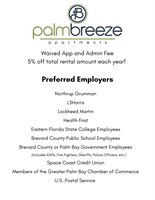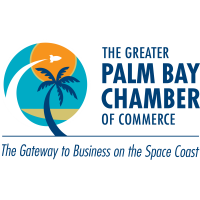


New Personal Checking Customer can earn up to $300 as follows:
• Open a New Banking Freestyle Student or Banking Freestyle checking account and get $150 for direct deposits totaling at least $500 and/or $50 for 15 debit card purchases (excludes all ATM transactions) performed in the first 90 days of account opening
• Open a New Classic or Senior Classic checking account and get $200 for direct deposits totaling at least $500 and/or $50 for 15 debit card purchases (excludes all ATM transactions) performed in the first 90 days of account opening
• Open a New Premium or Premium Elite checking account and get $250 for direct deposits totaling at least $500 and/or $50 for 15 debit card purchases (excludes all ATM transactions) performed in the first 90 days of account opening
The most overlooked skill in entrepreneurship isn’t coding, marketing, or even fundraising—it’s learning how to live with risk without letting it choke the vision. Risk management often gets painted as a dry, checklist-driven exercise, but for a founder, it’s closer to a dance between paranoia and courage. The stakes are not abstract; they’re payrolls, reputations, and sometimes entire livelihoods. Understanding how to tame risk without smothering ambition is what separates the ones who endure from the ones who burn out.
Reframing Risk as a Creative Constraint
Risk doesn’t have to be a looming threat—it can serve as a creative boundary that sharpens decision-making. Founders who treat risk as a constraint often find themselves generating more original solutions because they’re forced to innovate within limits. When you understand the edges of what could go wrong, you’re better equipped to see unconventional paths forward. The key is resisting the instinct to eliminate all risk and instead learning how to shape it into a guidepost.
Spotting the Risks That Don’t Make Headlines
While catastrophic failures grab attention, it’s usually the overlooked, incremental risks that quietly dismantle a business. These are the small inefficiencies, cultural misalignments, or creeping market changes that go unnoticed until they’ve eroded a company’s foundation. The founder who trains their eye to see these subtle signals can intervene before problems swell into crises. That skill—almost like reading the weather before a storm—comes from staying deeply connected to the operational and human layers of the business.
Catching the Letters You Can’t Afford to Miss
One of the easiest ways for a business to stumble into trouble is by overlooking official notices, lawsuits, or government correspondence. Choosing to get a registered agent service at ZenBusiness ensures these critical documents are received reliably and on time, no matter where the founder is or how busy the calendar gets. Missing even a single time-sensitive filing can trigger fines, default judgments, or regulatory headaches that cost far more than prevention. Many entrepreneurs outsource this role to a professional service to stay compliant without adding an administrative burden, turning a potential liability into a seamless safeguard.
The Role of Psychological Safety in Risk Strategy
A founder’s personal relationship with risk will shape the entire company’s culture around it. If leadership punishes every failed experiment, the organization will quickly learn to avoid taking any risks at all. On the other hand, creating psychological safety for calculated risk-taking encourages employees to surface ideas and flag concerns without fear. This environment doesn’t eliminate mistakes, but it ensures that the right ones are made for the right reasons.
Diversification Beyond the Usual Advice
Most conversations about diversification stick to revenue streams and customer bases, but real risk diversification runs deeper. It can mean varying the kinds of partnerships pursued, the geographies targeted, or even the operational methods employed. This multidimensional approach prevents overdependence on any one element of the business ecosystem. When turbulence hits, having multiple stabilizing forces makes the recovery less of a gamble and more of a deliberate pivot.
Turning Risk Reviews Into a Strategic Ritual
Rather than treating risk assessment as a compliance chore, founders can elevate it into a recurring strategic practice. Quarterly or monthly sessions focused solely on evaluating new and evolving risks can be woven into the leadership rhythm. These meetings are not about assigning blame but about surfacing fresh perspectives and course-correcting while there’s still time. Over time, this builds an organizational reflex that treats risk as an ongoing conversation instead of an emergency alarm.
The Founder’s Responsibility to Model Resilience
A founder’s calm under pressure often sets the tone for the entire team during moments of uncertainty. When leadership demonstrates that risk is a challenge to navigate rather than a catastrophe to fear, it shapes the company’s collective response. This doesn’t mean projecting false confidence—it means communicating with clarity, owning the unknowns, and acting decisively within them. In high-stakes environments, resilience is not just an asset; it becomes a competitive advantage.
Risk is the constant, invisible co-founder in every business venture. Ignoring it invites chaos, but over-managing it can smother the very spark that fuels growth. The founders who thrive aren’t the ones who find a magic formula to eliminate risk—they’re the ones who learn to work with it as an evolving partner. In the end, risk isn’t the villain; it’s the training ground where the most durable, adaptable companies are forged.
Discover unparalleled opportunities for business growth and community engagement with the Greater Palm Bay Chamber – your gateway to success on Florida’s Space Coast!

Looking for a professional and affordable space to host your next meeting? We're proud to support our local community by offering an exclusive Chambers Discount on our Boardroom rental at Fairfield Inn & Suites Melbourne West.
- Special Chambers Rate: $99 half-day / $149 full-day
- Includes complimentary Wi-Fi, coffee/tea station, and flat-screen TV with HDMI hookup
- Seating for up to 10 guests in a private, comfortable setting
- Ideal for team meetings, interviews, workshops, and planning sessions
- Flexible scheduling – weekday and weekend availability
Conveniently located less than a mile from I-95 with complimentary parking for you and your guests.
Let’s support local growth, one meeting at a time.
To reserve your spot, call or visit the front desk today.
Fairfield Inn & Suites Melbourne West
4355 W New Haven Ave, Melbourne, FL 32904
(321) 722-2220
Our property will automatically populate with the discount, and you can finalize your booking.

We are thrilled to announce that the new Hyatt Place Melbourne Airport is offering an exclusive discount just for you, your business, friends, and family! Enjoy a relaxing stay at one of Florida's most convenient and modern hotels.
📅 Book Now and Save:
Click here to book your stay or call Hyatt Reservations at 1 (888) 591 1234and mention Palm Bay Chamber of Commerce (Corporate Code: 1023890).
- Room Type: Standard
- Rate: Save 15-18% off based on availability
- Breakfast: Enjoy a delicious complimentary breakfast every morning
- Parking: FREE (regularly $7.50 + taxes per night)
- Check-in: 3:00 PM | Check-out: 12:00 PM
- Cancellation Policy: Free cancellation up to 48 hours before arrival
Bring your furry friends along! Pet fee: $75 per stay for up to 6 nights. Pet weight limit: 50 lbs. (2 pets max).
- Outdoor Pool: Open from dusk to dawn
- The Placery: Enjoy casual dining in our welcoming lobby from 10 AM to 10 PM. Try our Signature Burger, Chicken Caesar Salad, or Turkey Pesto Sandwich!
- The Market: Open 24/7 for grab-and-go snacks, fresh salads, and pastries!
- The Runway Rooftop Bar & Grill: Located on the 5th floor, open from 4 PM to 10 PM. Relax and unwind with incredible views! 🌅 Learn more
This October, in honor of Women's Small Business Month, it's essential to acknowledge the cutting-edge tools that enable women entrepreneurs to optimize their workflows and fuel growth. Adobe Acrobat provides a robust set of features aimed at boosting efficiency, simplifying document management, enhancing team collaboration, and streamlining crucial business processes. For women entrepreneurs eager to save time and concentrate on expanding their businesses, these solutions can be transformative in the fast-paced landscape of entrepreneurship.
Acrobat AI Assistant: With Acrobat AI Assistant, this option empowers entrepreneurs with smart document tools designed to boost efficiency and clarity. Its ability to generate summaries instantly highlights the most critical points of any document, turning dense information into actionable insights. Plus, by answering user questions directly, it streamlines decision-making and optimizes daily workflows, helping small business owners stay focused on growth and innovation.
Edit: Adobe Acrobat's Edit tool allows entrepreneurs to modify text and images directly within PDFs, ensuring quick adjustments without losing formatting. It offers a practical solution for small business owners who often need to update contracts, proposals, or marketing materials. This feature keeps document editing seamless, saving time and enhancing professionalism.
Share Feedback: Share Feedback in Adobe Acrobat fosters collaboration by allowing team members, clients, or stakeholders to provide input on documents in real time. Entrepreneurs benefit from this feature by streamlining communication and consolidating feedback from multiple sources. It’s a valuable tool for refining proposals or product documents to align with client expectations.
Request e-signatures: The Request e-signatures feature accelerates the signing process for entrepreneurs who need to finalize agreements quickly and securely. It enables business owners to send, track, and manage digital signatures, ensuring contracts are legally binding and efficient. This tool reduces the need for manual paperwork, helping entrepreneurs close deals faster and keep their businesses moving forward.
At Bon Bon Bon, founder and chocolatier Alexandra Clark and her team have leveraged the diverse suite of tools Adobe Acrobat offers to elevate their business operations and drive success.
Forward-thinking tools like Adobe Acrobat play a crucial role in the success of small women-owned businesses. By optimizing workflows and boosting productivity across various aspects of operations, these tools give entrepreneurs the freedom to concentrate on what matters most—expanding their businesses and making a difference. Whether it's simplifying administrative duties or crafting dynamic marketing strategies, Adobe Acrobat is worth a look to support every step of the journey.
Economic uncertainty is part of running a local business. Whether it’s inflation, shifting consumer habits, or supply chain disruptions, the businesses that thrive long-term are those that build financial resilience early. Resilience doesn’t mean eliminating risk — it means preparing for it with smart financial planning, diversified resources, and clear decision-making.
Below are key strategies local business owners can use to create stronger financial footing while positioning themselves for future growth.
Diversify Funding Sources
Relying solely on one bank loan or one revenue stream leaves a business vulnerable. Consider multiple funding pathways:
-
Community development financial institutions (CDFIs): These provide loans tailored to small businesses that may not qualify at larger banks.
-
Revenue-based financing: Flexible repayment terms based on sales can ease pressure during slower months.
-
Crowdfunding platforms such as Kickstarter let businesses raise capital while building community engagement.
-
Local chambers of commerce often run grant programs or connect members to regional funding opportunities.
By diversifying funding, you strengthen your ability to navigate downturns while maintaining cash flow.
Why Loan Structure Knowledge Matters
When securing financing, the fine print is just as important as the interest rate. Understanding repayment schedules, fees, and default clauses protects your long-term stability. Tools like online tools to outline a loan agreement make it easier to review terms in detail.
By familiarizing yourself with how agreements are prepared, you borrow more confidently and avoid pitfalls that can erode your cash flow. Resources that explain loan structures also help you negotiate better terms with lenders and compare financing options side by side.
Manage Debt Responsibly
Debt can be a growth tool or a burden. To stay on the right side of the balance sheet:
-
Prioritize paying down high-interest credit.
-
Refinance long-term debt when rates drop.
-
Monitor your debt-service coverage ratio (DSCR) — a critical metric lenders use to assess repayment ability.
-
Build a repayment calendar and link it to cash inflows to avoid surprises.
For more guidance, the U.S. Small Business Administration offers resources for debt management and refinancing.
Strengthen Creditworthiness
Good credit increases flexibility when opportunities or emergencies arise. Businesses can:
-
Pay vendors and lenders on time to build a positive track record.
-
Separate personal and business credit using dedicated business accounts (providers like Mercury streamline this).
-
Regularly monitor business credit reports to correct inaccuracies.
-
Keep utilization ratios low, especially on revolving credit lines.
Healthy credit is more than a number — it signals reliability to banks, suppliers, and even customers.
Protect Against Cash Flow Challenges
Cash flow hiccups are one of the top reasons local businesses fail. Practical steps include:
-
Forecast expenses at least 3–6 months ahead.
-
Maintain an emergency reserve equal to two months of operating expenses.
-
Negotiate with suppliers for extended terms during slower seasons.
-
Use digital accounting tools like QuickBooks to automate invoicing and monitor receivables.
Building predictable inflows and outflows shields your business from daily volatility.
Financial Resilience Strategies at a Glance
|
Strategy |
Key Actions |
Helpful Resources |
|
Diversify Funding |
Mix loans, grants, crowdfunding, CDFIs |
Local chambers, Kickstarter |
|
Manage Debt Responsibly |
Refinance, prioritize repayment, monitor DSCR |
|
|
Strengthen Creditworthiness |
Build credit history, separate accounts |
|
|
Protect Cash Flow |
Forecast, reserve funds, supplier negotiation |
FAQs on Local Business Financial Resilience
How much emergency cash should a local business keep on hand?
Aim for two to three months of operating expenses in reserve, adjusted for industry volatility.
Are grants a realistic funding option for small businesses?
Yes, especially through regional economic development agencies and chambers. However, competition can be high, so pair grants with other funding sources.
How often should I review my loan agreements?
Annually at minimum, or whenever you refinance or change repayment terms.
What’s the fastest way to improve business credit?
Consistently paying vendors and lenders on time is the most effective way. Opening a secured business credit card can also help.
How do I protect cash flow during seasonal downturns?
Negotiate flexible terms with suppliers and consider short-term credit lines to bridge gaps.
Conclusion
Financial resilience doesn’t happen overnight. It’s the result of proactive planning — diversifying funding, managing debt with intention, building strong credit, and guarding against cash flow crunches. By laying these foundations now, local businesses can navigate uncertainty with confidence and position themselves for steady, long-term growth.
You can discover unparalleled opportunities for growth and networking by visiting the Greater Palm Bay Chamber of Commerce today!
AI doesn’t replace your instincts—it sharpens them. For small business owners, it’s not about handing over control. It’s about reclaiming time and momentum. When used tactically, AI tools transform tedious workflows into growth accelerators. And they do it without demanding a massive budget or technical know-how. Below are seven ways these tools are already reshaping modern marketing for lean, local operators.
Chatbots That Never Clock Out
You’ve probably already noticed this: customers don’t keep business hours. But what many small businesses are discovering is the power of engaging customers with 24/7 chatbot support to handle inquiries around the clock. These aren’t the clunky bots of 2016—they’re trained, contextual, and increasingly indistinguishable from a support rep. Someone visits your site at 10:42 p.m. asking about turnaround time? The bot answers clearly and keeps the conversation going. That responsiveness builds trust, reduces drop-offs, and gives your brand a human edge—even when no one's at the keyboard. It’s low-lift, high-return service that scales quietly in the background.
Videos That Start with a Sentence
You don’t need to film, edit, or storyboard anymore. Modern AI lets you describe your vision and then it handles the rest; check out AI video generator technology explored. These tools take your prompt (say, “animated clip about eco-friendly packaging”) and return a polished visual, ready for publishing. For small businesses, this replaces a multi-week process with a five-minute task. You get brand-consistent, scroll-worthy assets without the overhead of a creative team. And because it’s all prompt-based, iteration is fast and intuitive. The result? Video storytelling becomes a button, not a budget line.
AI That Converts Conversations into Customers
The difference between a chat and a conversion is design. What forward-thinking owners are deploying now are AI sequences that don’t just talk—they qualify. You can qualify leads through interactive chatbot flows that segment them by interest, intent, and readiness to buy. No one fills out a contact form anymore; they ask questions, click buttons, and expect something in return. These flows allow small teams to act like big ones, nurturing hot leads automatically while staying out of the weeds. And when the bot hands someone off to a human? They’re already warmed up. It’s not just lead capture—it’s pre-sales choreography.
Smarter Email, Fewer Guesswork Loops
It’s not the volume of emails—it’s the timing, tone, and targeting that win. Rather than reinventing every campaign, many small businesses are now automating email workflows with smart personalization. You set the rules—like a welcome sequence, or a discount nudge after browsing—and the system handles the rest. These platforms don’t just schedule sends; they adjust content based on user behavior and segment engagement levels automatically. This means less time fiddling with lists and more time focusing on outcomes. You’re not sending blasts; you’re holding conversations at scale. And that’s what keeps inboxes warm and customers returning.
Smarter Insights from the Metrics You Already Have
Publishing content is only half the game. Reading it back—through data—is where growth lives. Tools now let small businesses start using AI marketing analytics for decisions that previously required an analyst or agency. We’re talking dwell time, scroll depth, exit points—real signals, not vanity numbers. You get to see which landing page holds attention and which one bleeds visitors. This isn’t a spreadsheet marathon; it’s a highlight reel of what’s working, right now. And when your decisions are based on real behavior, not gut, you’re not just reacting—you’re steering.
Innovation Without Permission
AI gives you more than efficiency—it gives you freedom to try. Many of the most agile businesses today are leveraging AI tools to drive business innovation not through overhauls, but experiments. A/B testing emails, launching mini-campaigns, prototyping content—these things now take hours, not weeks. That low-cost, low-risk dynamic changes the game: you can move faster than competitors stuck in strategy cycles. It also makes your business more adaptive. You’re no longer reacting to change—you’re playing with it. And in today’s landscape, that’s power.
AI doesn’t mean ceding control. It means taking it back. These tools don’t remove the human—they remove the repetitive. And that’s exactly what small business owners need: more time in their zone of genius, less stuck in ops. Whether you’re writing fewer emails, launching smarter campaigns, or answering customers while you sleep, AI has shifted from abstract promise to practical toolset. Use what works, ignore what doesn’t—but start now. Because the businesses that figure this out early? They’re not just marketing better. They’re winning.

.png)
.png)
.png)
